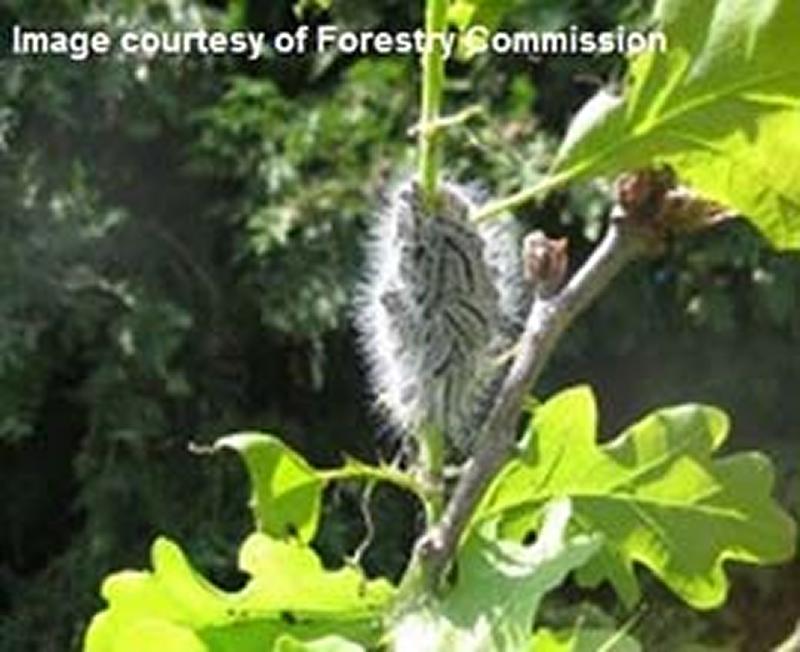
Oak processionary moth addressed
As of 21st August 2018, legislation will be introduced by DEFRA which aims to protect oak trees within the UK from the Oak processionary moth (OPM) Thaumetopoea processionea. The move follows a recent interception in trade of OPM from the Netherlands (where the pest is now widespread, along with central and southern europe) to the UK.
The precautionary measures are necessary due to the risk posed to native oak trees, humans and some animals whilst the oak processionary moth is in its caterpillar life stage. The risks are twofold:
- As a caterpillar, oak processionary moths are capable of defoliating large areas of oak trees. This leaves target trees vulnerable to other, external stresses, such as disease, drought or flooding.
- The caterpillars have thousands of hairs which, when in contact with human or animal skin, can cause unpleasant rashes. In isolated cases, the hairs can cause more serious issues such as sore throats, breathing difficulties and eye problems. The hairs are also commonly found in the nests they live in.
As a result of this risk, legislation will be introduced to prohibit the movement of plants into OPM protected zones unless they meet specific criteria.
What legislation is being introduced?
Legislation will be applied to movement of all Oak trees (with the exception of Quercus suber) with a girth at 1.2 metres above the root collar of 8cm or more, into OPM protected zones unless specific conditions are met. The legislation states imports into and movement within OPM protected zone are permitted only if oak specimens:
- Have been grown throughout their life in places of production in countries in which Thaumetopoea processionea L. is not known to occur;
- Have been grown throughout their life in a protected zone which is recognised as such for Thaumetopoea processionea L. or in an area free from Thaumetopoea processionea L., established by the national plant protection organisation in accordance with ISPM No. 4;
- Have been produced in nurseries which, along with their vicinity, have been found free from Thaumetopoea processionea L. on the basis of official inspections carried out as close as practically possible to their movement and official surveys of the nurseries and their vicinity have been carried out at appropriate times since the beginning of the last complete cycle of vegetation to detect larvae and other symptoms of Thaumetopoea processionea L.; or
- Have been grown throughout their life in a site with complete physical protection against the introduction of Thaumetopoea processionea L. and have been inspected at appropriate times and found to be free
Where is the OPM protected zone?
All of England is regarded as a protected zone, with the exception of the following local authority areas (currently around London and the south):
- Barnet
- Brent
- Bromley
- Camden
- City of London
- City of Westminster
- Croydon
- Ealing
- Elmbridge
- Epsom and Ewell
- Hackney
- Hammersmith and Fulham
- Haringey
- Harrow
- Hounslow
- Islington
- Kensington and Chelsea
- Kingston upon Thames
- Lambeth
- Lewisham
- Merton
- Reading
- Richmond upon Thames
- Runnymede
- Slough
- South Oxfordshire
- Southwark
- Spelthorne
- Sutton
- Tower Hamlets
- Wandsworth
- West Berkshire
As part of the legislation, any plants destined for a protected zone must be accompanied by official documentation confirming that they are free from the oak processionary moth.
What about Oak trees with a girth at 1.2 metres above the root collar of less than 8cm?
These trees represent significantly less risk of concealing OPM, and are therefore not subject to these restrictions.
